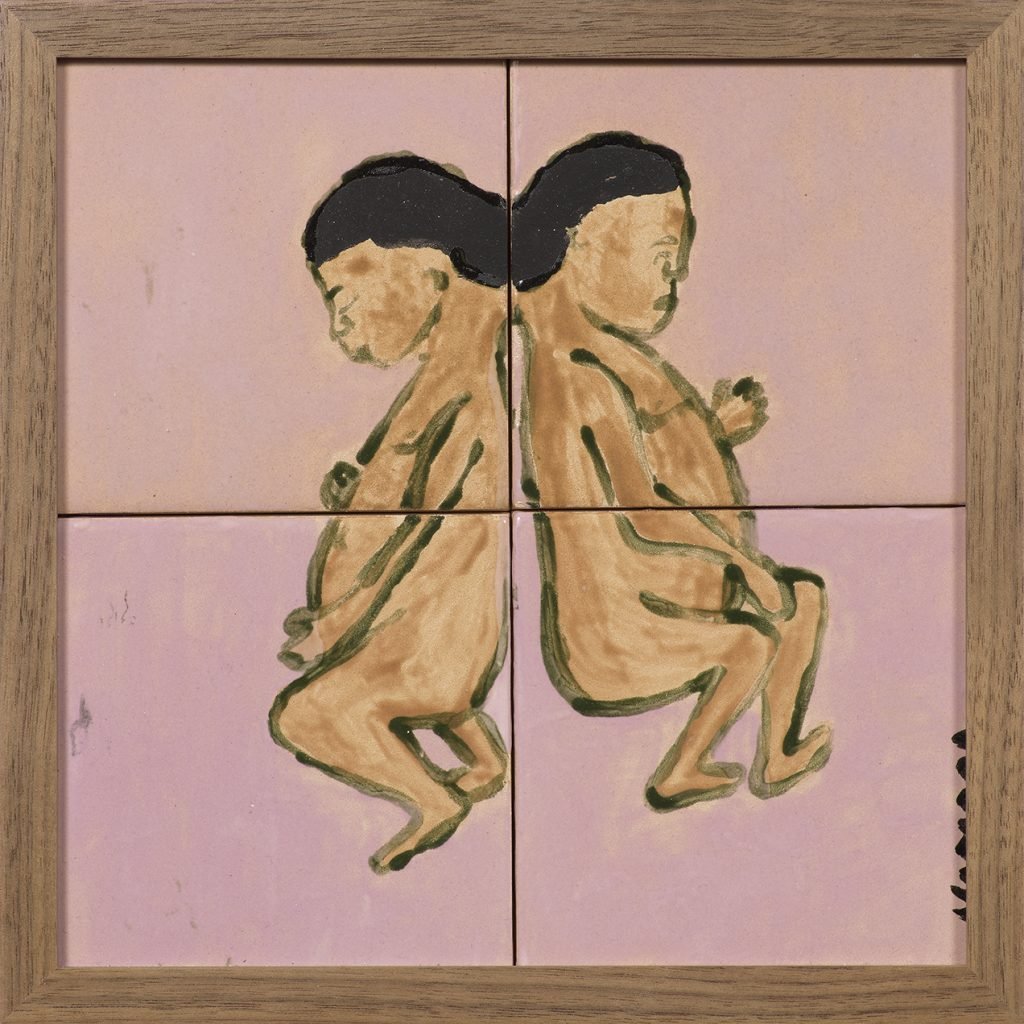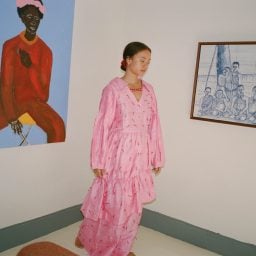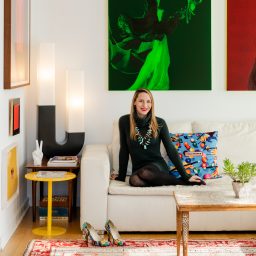The Washington, D.C.-based lawyer, philanthropist, and art collector Schwanda Rountree has long recognized the importance of assembling a collection carefully, with intention, and over time. “I first fell in love with art when I was a kid,” Rountree said. “Whenever I got a chance to be surrounded by art, I was in a joyful space.”
Though art was always a passion and important part of Rountree’s life, it was her move to D.C. after graduating from law school that spurred her to become more actively involved in the art world. She began exploring the city’s many art institutions and venues, and started attending artist talks and salons. “Going to museums and galleries wasn’t an outing,” said Rountree. “It was an essential part of my being.”
Today, Rountree runs her own
art consultancy in the capital, and has served on the leadership boards of various cultural entities, including the former Corcoran Gallery of Art and as an executive board member of the James A. Porter Colloquium on African American Art at Howard University. She is a frequent speaker on panels on the subject of art collecting. And with the sharp eye clients seek her out for, she has amassed an enviable art collection featuring works by Sanford Biggers, Nina Chanel Abney, Cassi Namoda, Kehinde Wiley, and many other top Black contemporary artists working today.
We recently spoke to Rountree about what she collects, how she likes to display it, and her thoughts on art’s relationship to style. Read on for the interview below.
My most recent addition to the collection was a small Cassi Namoda painting. I love her work.
Which works or artists are you hoping to add to your collection this year?
I would like to add a Naudline Pierre to my collection. I admire her art practice and the depth of her paintings. I also love Somaya Critchlow’s work.
What is the most expensive work of art that you own?
I can’t answer that question!
Where do you buy art most frequently?
I have a number of galleries that I enjoy supporting in New York and Los Angeles. I have been following the artwork presented by James Cohan’s gallery for many years.
Is there a work you regret purchasing?
There is no artwork I regret acquiring. I love supporting artists.
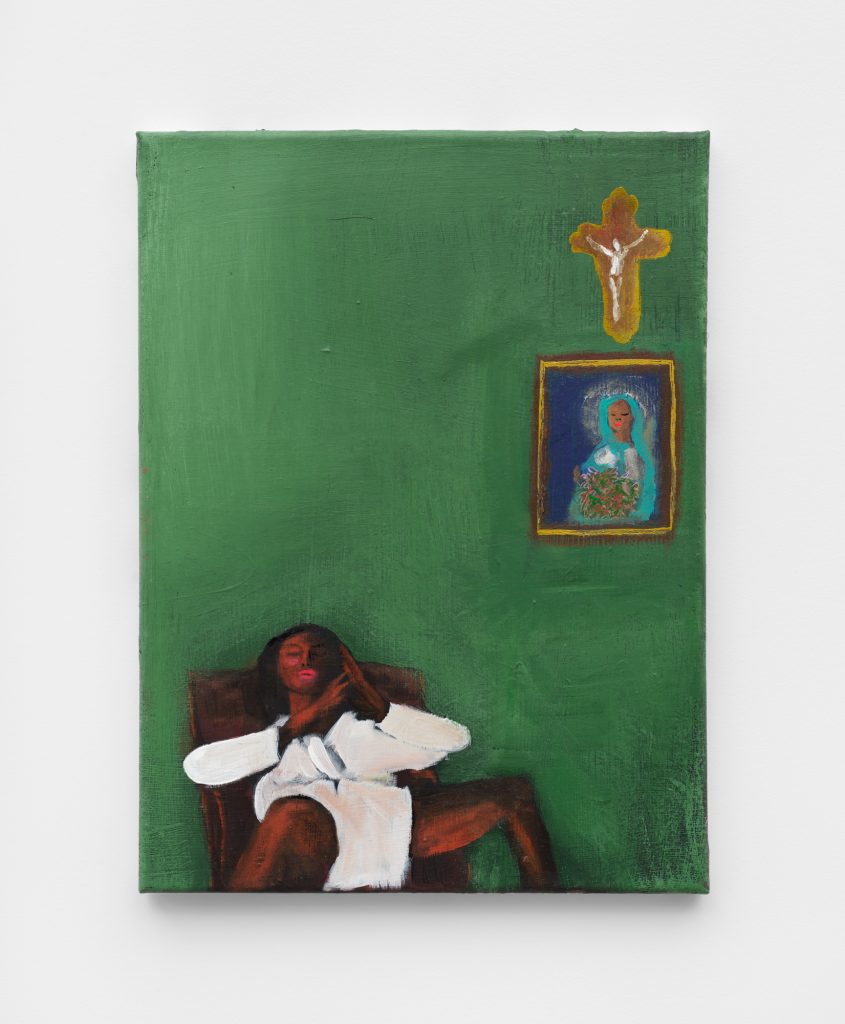
Danielle McKinney, To Talk About God (2020). Courtesy of the artist and Schwanda Rountree.
How do you like to display your artwork?
I love to fill every part of my home with art, including stairwells. There are salon-style installations comprised of various sizes and mediums—paintings, drawings, photographs—all in conversation with each other. The work should live with usorganically throughout various spaces of the home, so that we can enjoy it.
What work do you have hanging above your sofa? What about in your bathroom?
I have windows behind my sofa, so nothing there. Funny that you ask what’s in my bathroom: I have a cool Nina Chanel Abney poster that she made during her residency at the University of North Carolina at Chapel Hill. It’s framed behind glass. Moisture and humidity are always a concern with artwork in a bathroom space, so tapestries and posters offer good alternatives.
What work do you wish you had bought when you had the chance?
There are so many artworks that I wish I had bought when I had a chance, especially when the artists were early in their careers and the work may have been more affordable or accessible. There are too many to name…
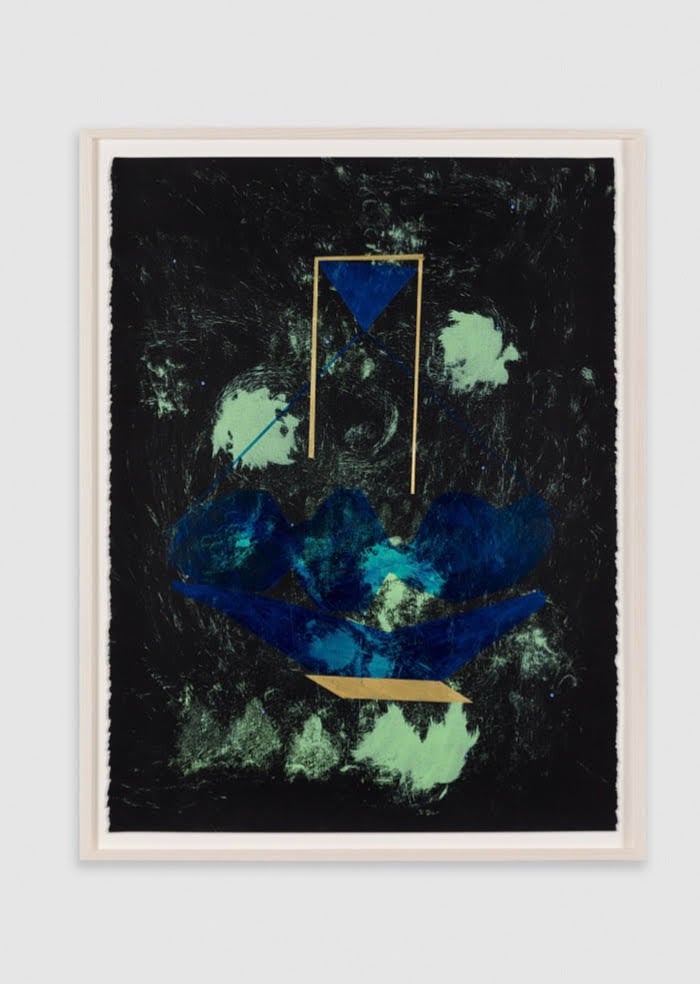
Caroline Kent, How to tell time when air has left the room (2018). Courtesy of the artist and Schwanda Rountree.
What does art mean to you?
Art means everything to me: culture, visual stimulation, legacy, and joy.
What does style mean to you? How do you define the relationship between art and style, in your view?
Style to me means creative freedom and confidence. I don’t know if there is a relationship between art and style. Maybe freedom of expression? I leave it up to the artists as to what it means to them on a personal level…I’m just happy to be able to experience art as a collector and custodian.


